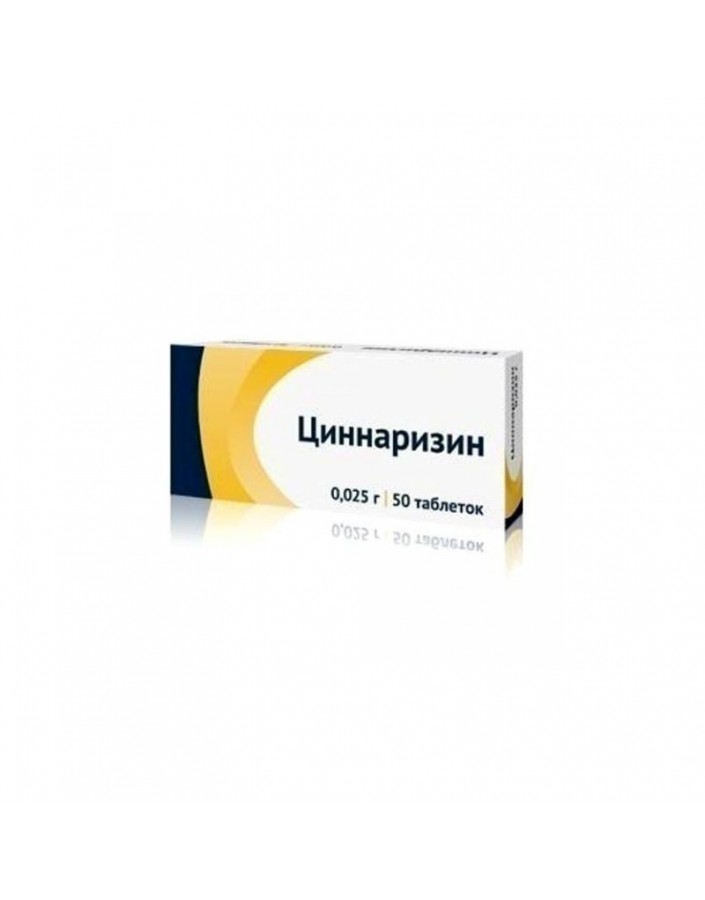




Security policy (edit with Customer reassurance module)

Delivery policy (edit with Customer reassurance module)

Return policy (edit with Customer reassurance module)
Calcium channel blockers of Cinnarizine group
International non-proprietary name
Cinnarizine
Vacation order
Prescription
Synonyms
Vertizin, Diziron, Stugezin, Stugeron, Tsinazin, cynarin, Tsinedil, Cinnarizine Inbioteh, Cinnarizine forte, forte-Ratiopharm Cinnarizine, Cinnarizine-MIC-Milva Cinnarizine, Cinnarizine Ros, Tsinnaron, Tsinnasan, Tsirizin
Composition
Active ingredient - Cinnarizine.
pharmachologic effect
Vasodilator, improves cerebral circulation, improves peripheral circulation. It has a high affinity for calcium channels of the brain vessels, improves cerebral blood circulation, reduces cerebral phenomena, headache, and tinnitus. Inhibits reactions to biogenic vasoconstrictor substances (adrenaline, norepinephrine, bradykinin). It improves microcirculation, increasing the elasticity of erythrocyte membranes and lowering blood viscosity. Increases cell resistance to hypoxia. Reduces the excitability of the vestibular apparatus (including nystagmus and other autonomic disorders). It has moderate antihistamine activity. In patients with impaired peripheral circulation, blood circulation improves and potentiates post-ischemic hyperemia. Does not affect blood pressure and heart rate. When ingested quickly and completely absorbed. Actively and completely metabolized.Does not possess teratogenicity.
Indications for use
Cerebrovascular insufficiency (dizziness, tinnitus, decreased ability to concentrate or memory, etc.), dyscirculatory encephalopathy, involutional psychosis or depression, a state after a stroke or head injuries, migraine, vestibular disorders (Meniere's syndrome, kinetics, etc. manifested by imbalance, nausea, vomiting, nystagmus, etc.), impaired peripheral circulation (Raynaud’s disease, arteriosclerosis obliterans, thromboangiitis, diabetic angiopathy, trophic and varicose veins ulcers, acrocyanosis, paresthesias, night cramps and cooling of the extremities.
Contraindications
Hypersensitivity, breastfeeding.
Side effect
From the nervous system and sensory organs: drowsiness; fatigue, weakness, dizziness, headache; in elderly patients, when taking large doses (150 mg / day), extrapyramidal disorders (tremor, muscle stiffness, hypokinesia) may develop, requiring discontinuation of the drug. On the part of the digestive tract: dry mouth, dyspeptic phenomena, cholestatic jaundice. On the part of the skin: increased sweating, manifestations of lupus erythematosus or lichen planus. Other: allergic skin reactions, weight gain.
Interaction
The effect is enhanced (mutually) by tricyclic antidepressants, drugs that depress the central nervous system, alcohol. Enhances the effect of nootropic drugs.Increases vasodilating activity of other means.
Overdose
No data.
Dosing and Administration
Inside, after eating. Violation of cerebral circulation and vestibular disorders - 25 mg 3 times a day; prevention of sea and air sickness - 25 mg 30 minutes before the trip, if necessary, again after 6-8 hours; violation of peripheral circulation - 50-75 mg 3 times a day, for a long time - from several weeks to several months. Children are given half the dose for adults.
special instructions
Use with caution while working drivers of vehicles and people whose profession is associated with increased concentration of attention. Patients with Parkinson's disease can be prescribed only if the expected effect of therapy exceeds the risk of worsening of the underlying disease. With prolonged use, it is recommended to monitor the function of the liver, kidneys and peripheral blood. Within 4 days after taking a false result is possible when carrying out skin allergy tests.
Storage conditions
List B. In a dry place protected from light.